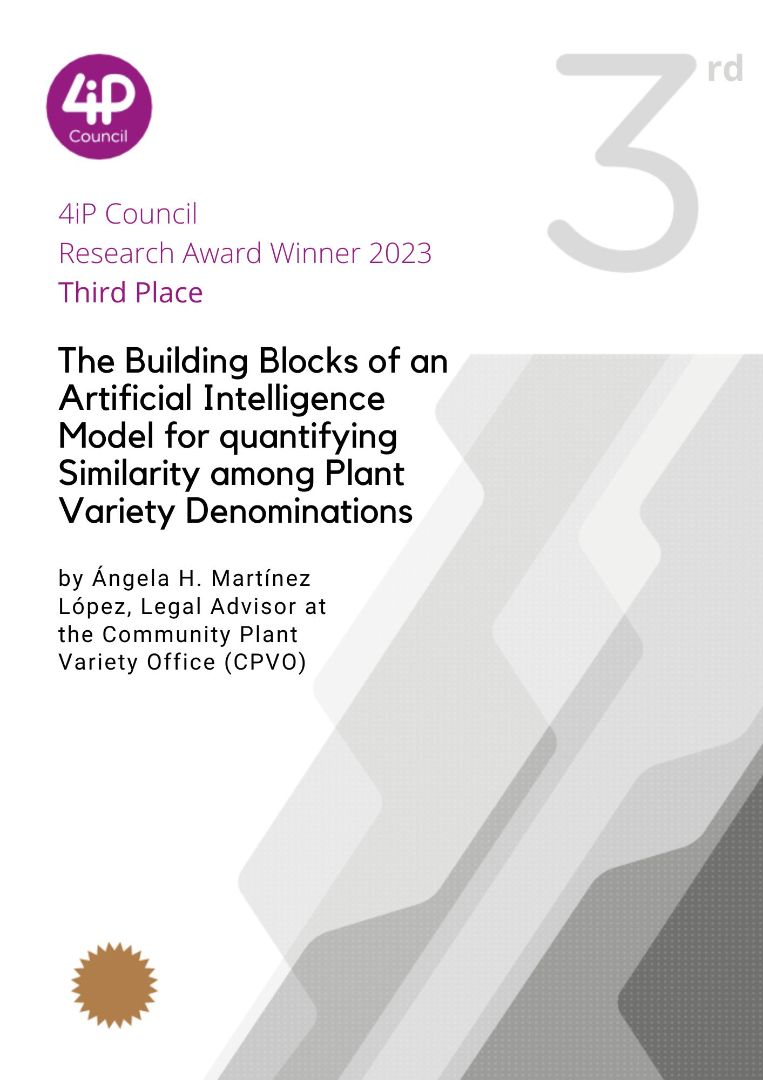Summary
The present research paper serves to devise the foundations of an Artificial Intelligence (“AI”) powered model for testing the similarity among plant variety denominations (hereinafter, “denominations”). The imperious need for such a tool is explained by the so-called “saturation” phenomenon, that is, the fact that the number of denominations in registers is progressively increasing and in consequence the likelihood of conflicts between these and novel proposed denominations increases too. An algorithm can help much here because, in a matter of seconds, it is capable of scanning through a large database and compute relatively accurate similarity rankings.[1]
The proposed similarity testing model is aimed at supporting examiners from Plant Variety Protection (“PVP”) offices across the globe in the process of assessing the suitability of proposals for denominations. Further, the model can be projected outwardly in the form of “pre-apply” services, so that applicants for denominations can also make use of it for evaluating if their designation of interest is likely to be deemed eligible for registration by the PVP authority. Accordingly, the overall architecture is conceived as a “bicephalous” system, which first “head” is a back-office for use by denomination examiners in a PVP office and which second “head” is a front-office rendered accessible to any external user.
The model proposed thus represents the convergence between two fascinating domains, namely, that of computer science and that of PVP and denominations. More specifically, the conceptualisation exercise conducted here is framed within the disciplines of similarity intelligence (i.e.: the process of discovering intelligence through similarity among objects)[2] and of “jurimetrics” (i.e.: the science of applying quantitative methods, especially probability and statistics, to law)[3]. From a methodological perspective, the study has been based to a large extent on literature concerning computer-automated models for use in the domain of trade mark protection. Therefore, despite the model has been specifically envisaged for its deployment in the environment of a PVP office, some of its building blocks can also be of interest for Intellectual Property (“IP”) offices competent for the registration of trade mark rights.
It is important to warn that the ambitions for developing a well-oiled machinery for testing similarities does need to be tempered with the right dose of realism. Indeed, the subjectivity inherent to the examination of proposals for denomination implies that encoding into algorithmic formulas legal notions and common-sense nuances proves extremely complex. When it comes to the use of the model by denomination examiners, the importance of keeping them on the helm of the procedure cannot be overemphasised. It is not machines but them, as agents competent for the overall assessment of the likelihood of confusion among designations, who have the final say on the suitability of denominations. The computer-generated output can serve them as supportive aid, but they should always analyse such with a critical spirit. Moreover, examiners must receive proper training on the use of the model and be aware of the fact that automated decisions are generally bestowed of a “halo of objectivity” that can prove deceiving at times. On the other hand, the model’s external users must be informed about the potential errors in the model’s outputs. The use of disclaimers on this matter is, for instance, an effective mechanism to convey this message.
In the present research paper, the above-referred aspects are scrutinised in detail. In terms of organisation, the work has been structured into five sections concerning different thematic areas. The study is opened with Section 1, consisting in a general introduction to the investigation. It is followed by Section 2, containing a necessary description of the nature and function of the denomination, as well as of its regulatory framework. The ins and outs of the AI-powered similarity testing model are then described in Section 3. Next, Section 4 contains some brief considerations about the perspective and potential expectations of the two main types of users targeted with the model, namely, denomination examiners and applicants for PVP rights. Lastly, Section 5 serves as a wrap-up of the main takeaways of this investigation.
[1] An algorithm can be defined as “a sequence of computational steps for solving a problem”. Algorithms boast an advantage of scale vis-à-vis humans. They have the capacities of multitasking and of computing vast amounts of data at an incomparable speed (K. A. Chagal-Feferkorn, ‘How Can I Tell if My Algorithm Was Reasonable?’ , 2021, Vol. 27, Issue 2, Michigan Technology Law Review, 213).
[2] Z. Sun, ‘Similarity Intelligence: Similarity Based Reasoning, Computing, and Analytics’ , 2023, Vol. 5, Issue 3, Journal of Computer Science Research, 2.
[3] K. D. Ashley, ‘Modelling Legal Argument: Reasoning with Cases and Hypotheticals’, 1990, Artificial Intelligence and Legal Reasoning Series, MIT Press (Bradford), Cambridge (Massachusetts), 128.3 of 16






